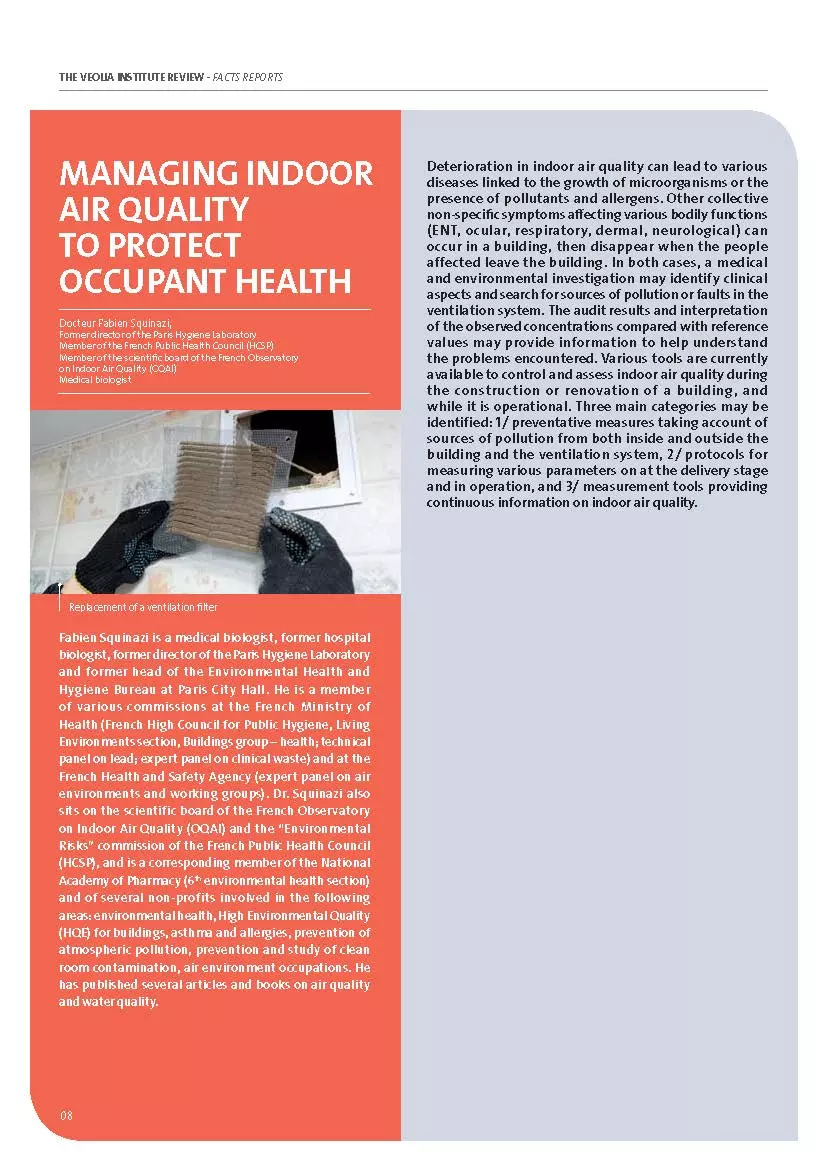Docteur Fabien Squinazi
The French Public Health Council (HCSP)
The French Observatory on Indoor Air Quality (OQAI)
Deterioration in indoor air quality can lead to various diseases linked to the growth of microorganisms or the presence of pollutants and allergens. Other collective non-specific symptoms affecting various bodily functions (ENT, ocular, respiratory, dermal, neurological) can occur in a building, then disappear when the people affected leave the building. In both cases, a medical and environmental investigation may identify clinical aspects and search for sources of pollution or faults in the ventilation system. The audit results and interpretation of the observed concentrations compared with reference values may provide information to help understand the problems encountered. Various tools are currently available to control and assess indoor air quality during the construction or renovation of a building, and while it is operational. Three main categories may be identified:
- Preventative measures taking account of sources of pollution from both inside and outside the building and the ventilation system,
- Protocols for measuring various parameters on at the delivery stage and in operation, and
- Measurement tools providing continuous information on indoor air quality.



